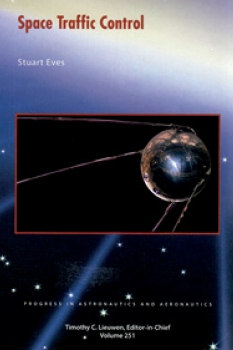Space traffic control – the title of this book – has become a space-related catch phrase of the early 21st century. Its earthbound sister is the far-better-known air traffic control (ATC), which evokes airports, radars and controllers staring into screens displaying a plethora of aircraft tracks across the globe. But how does STC compare?
This relatively brief volume begins by describing the main reason a system of control for space traffic is required – the burgeoning space debris population. Making a deliberate analogy with ATC, the author points out that ‘a system of standards and regulations was necessary to enable international air travel’ and that ‘we have now reached that juncture in space’.
In eight chapters, the book describes space situational awareness and tracking systems, debris mitigation techniques, the threats and hazards themselves and how to improve the situation in future. It is illustrated, fairly sparsely, with monochrome images and line drawings, and has an index.
The book provides a useful introduction to this increasingly important topic but perhaps lacks the level of detail required by space practitioners and implied by its generic, catch-all title. Anyone with a good general knowledge of the space field will fail to discover much that is new in this volume and so they may find the level of content does little to justify the eye-watering price.
Overall the book, part of the AIAA Progress in Astronautics and Aeronautics series, is well-researched and written on a subject of great future importance. readers might do well to await a more comprehensive and definitive text.
Mark Williamson











